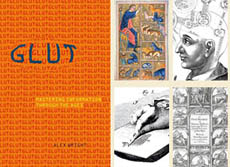IA Summit: Stone Age Information Architecture
March 27, 2006
Yesterday morning, I gave my presentation at the IA Summit. The slides should be up soon on the Summit Web site; but for now, here's a quick recap of my talk.
Update: the slides are now available (note: Firefox users will need to click "save as" on the preceding link)..
This was the first time I've talked to an audience about the book I've been working on for the past couple of years, so I was grateful - if slightly nerve-wracked - at the opportunity to air out some of these ideas in public.
Briefly, my talk explored the question of how pre-literate cultures manage their collective intellectual capital. In particular, I focused on the use of folk taxonomies (not to be confused with "folksonomies"), visual symbol systems, and the cultural effects of the transition from oral to literate cultures. Finally, I tried to probe the relevance of these systems to present-day problems in information architecture.
We tend to give Stone Age people short shrift as systems thinkers. In the popular stereotype, "cave men" are cultural simpletons, too preoccupied with the day-to-day business of survival to pursue the loftier avenues of civilization. Modern literate societies tend to write off these cultures as "prehistoric," drawing a sharp dividing line that relegates them to narrow domains of inquiry like archaeology and anthropology. This bias towards literacy runs deep in our culture; and we tend to bound our questions about modern cultural conundrums to the limited horizon of the last 2500-5000 years. In truth, however, pre-literate peoples develop remarkably complex systems for managing information. My working hypothesis is that those systems hold instructive clues about modern problems of information architecture.
Folk taxonomies provide the most compelling example of how pre-literate people create complex, hierarchical systems to keep track of what they know. Every tribal culture ever studied has created a taxonomy of plants and animals; and as far as we know, these systems stretch deep into our species' past. While these systems vary considerably in the details, they all share a surprisingly similar structure. The key hallmarks of folk taxonomies include:
- Hierarchical categorization (5-6 levels deep)
- Psychological primacy of a "real name" in the middle of the categorization (what Lakoff refers to as basic-level categories)
- Binomial naming conventions
- "Affiliate" (or meta) classes that run horizontally across categories
- High degree of conformity
Folk taxonomies also provided a basic semantic scaffolding for human cultures to encode layers of shared knowledge: kinship networks, mythological systems, and cultural norms. From the Zuni tribe of the American Southwest to the Wakelbura of the Australian Outback to the ancient Greeks, synaesthetic systems of knowledge took shape around a basic hierarchical template. As Hobart and Schiffman put it:
The linguist Walter J. Ong coined the term "secondary orality" to describe the similarity of online communications to older oral traditions (although secondary orality differs from "primary" orality in the sense that secondary orality is deeply bound up with writing). On the Web, a great deal of user activity hews closely to oral modes of interaction - e.g., blogs, email and IM - styles of communication that are constantly shifting, lacking the epistemological fixity of traditional print culture. If we look around the Web today, we can see these two cultures of spoken and written words negotiating an uneasy embrace.
Oral cultures also rely heavily on symbol systems to create bonds of trust in distributed social networks. Totemic objects like beads, bones and cave paintings functioned not just as decorative or ritual objects, but as tokens of information, used to negotiate social relationships, serve as markers of trust, and enable people to forge bonds with each other beyond their immediate kinship circle. Totemic objects thus facilitated a "release from proximity" that allowed progressively more complex social structures to emerge. Today, we also rely on totemic symbols for exactly the same reason. Mechanisms like Ebay trust points, Amazon reviewer ratings, Technorati rankings all give us a means to accomplish the same kind of release: to forge bonds of trust with people we don't know, and to engage in new distributed forms of socializing that don't require the proximity of social encounters.
In conclusion, I suggest that the study of Stone Age Information Architecture offers three central lessons:
1. Ontology is underrated
2. Social networks are symbol networks
3. "Orality" is the new literacy
So, that was the gist of my presentation (although I've omitted quite a few granular details here). Thanks to everyone who took the time to listen, and especially to the folks who participated in the lively Q&A at the end of the session. I'll have more to say on this subject (among other things) in the months ahead.
tags: IA Summit, IA Summit 06, IA Summit 2006
File under: Informatics
_____________________« Vancouver | Between the cracks »
GLUT:
Mastering Information Through the Ages
New Paperback Edition
“A penetrating and highly entertaining meditation on the information age and its historical roots.”
—Los Angeles Times
